Picture this: you’re working on your latest music production, meticulously crafting each element to create a sonic masterpiece that will captivate listeners… but something is missing.
It’s that undeniable groove, the heartbeat of your song that keeps people hooked and wanting more.
That’s where the magic of Rhythm and Tempo comes into play.
Today, we’re going to dive into the world of beats, pulses, and metronomes as we explore the fascinating realm of Rhythm and Tempo.
We’ll delve into the intricacies of these two vital elements, uncovering their true essence and how they interplay to bring life and emotion to any piece of music.
So, get ready to break down the age-old debate of Rhythm vs Tempo.
It will reshape your understanding of these essential components in music production and you’ll unlock the secrets to crafting truly engaging and dynamic compositions.
Let’s dive in…
Table of Contents
The Basics of Music Theory
Before we get into the nitty-gritty of Rhythm and Tempo, let’s quickly cover some Music Theory basics.
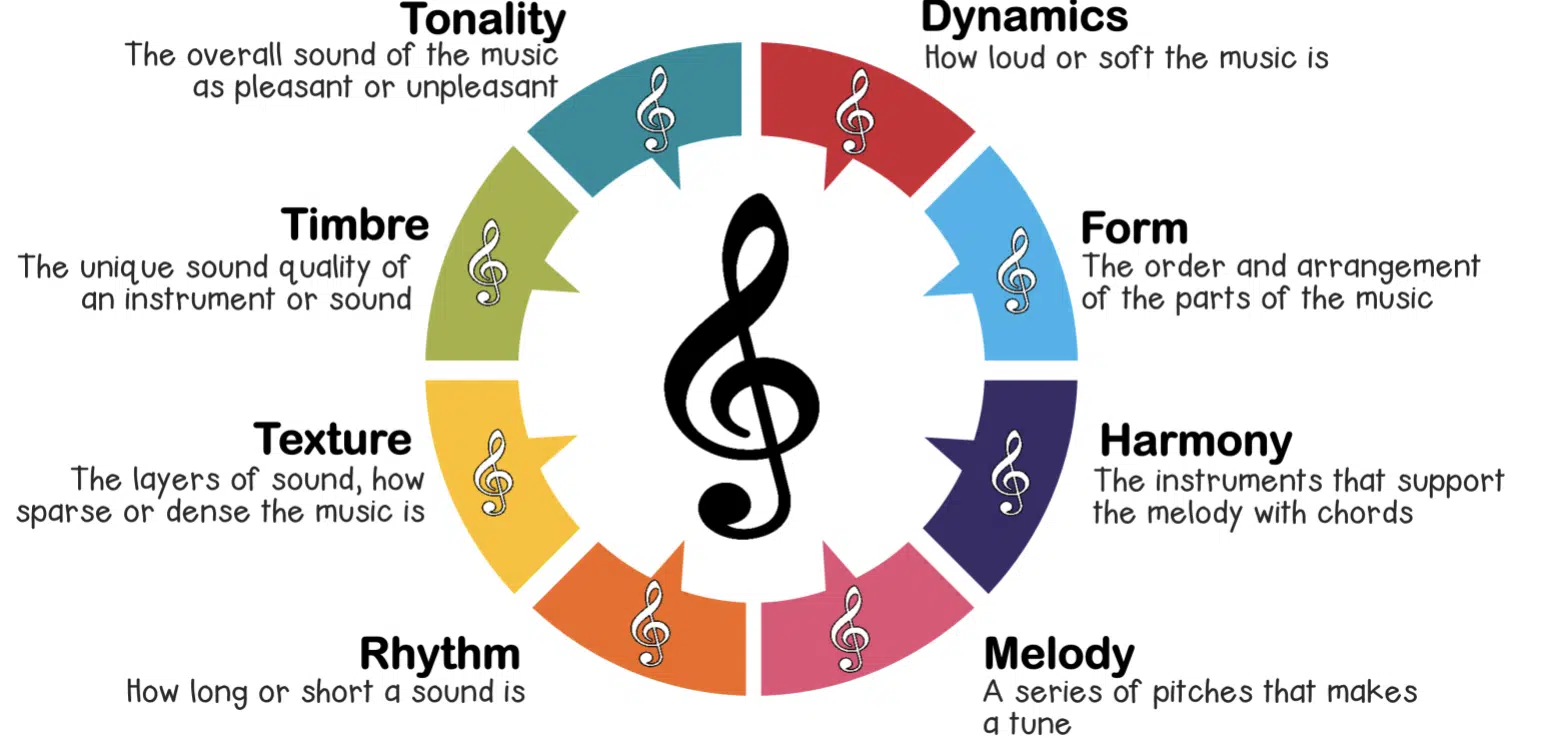
Music Theory comprises several key elements, including:
- Rhythm 一 The pattern of beats and the space between them, which gives the music its structure and flow.
- Tempo 一 The speed at which a piece of music is played, typically measured in beats per minute (BPM) and influencing the overall mood and energy of the composition.
- Melody 一 A series of individual notes played in a sequence to create a tune.
- Timbre 一 Timbre, or tone color, is the unique quality of a sound that distinguishes one instrument or voice from another.
- Harmony 一 The combination of multiple notes played simultaneously, which forms chords and supports the melody.
For example, imagine a simple melody played on a piano.
The individual notes make up the melody, while the chords formed by combining multiple notes create harmony.
The rhythm played dictates the pattern at which the melody progresses, and the tempo determines the speed of the piece.
The timbre of the piano gives the music its distinct sound.
Rhythm & Tempo in Music Theory
Rhythm and Tempo are two of the most critical aspects of Music Theory.
They’re the backbone of any composition, influencing how listeners perceive and engage with the music.
Rhythm provides the foundation for the melody and harmony, creating a structure for the music to follow.
Tempo, on the other hand, sets the overall pace of the piece, which can evoke a wide range of emotions in the listener.
To illustrate this, let’s consider two different songs with contrasting rhythms and tempos:
- A slow, melancholic ballad
- A high-energy dance track
The slow tempo of the ballad evokes a sense of sadness or introspection, while the fast tempo of the dance track creates a sense of excitement and energy.
The rhythm played in both songs further enhances the emotional impact by providing a steady beat and a sense of movement.
A solid understanding of Music Theory is essential, especially if you’re first learning how to become a music producer.
By learning the basics of Melody, Harmony, Rhythm, and Timbre, you’ll be better equipped to craft unique and engaging compositions, scales, and chords.
It will also help you appreciate the intricacies of Rhythm and Tempo and how they interact with each other.
Now that we’ve covered the basics of Music Theory, let’s get into the good stuff.
What is Rhythm?
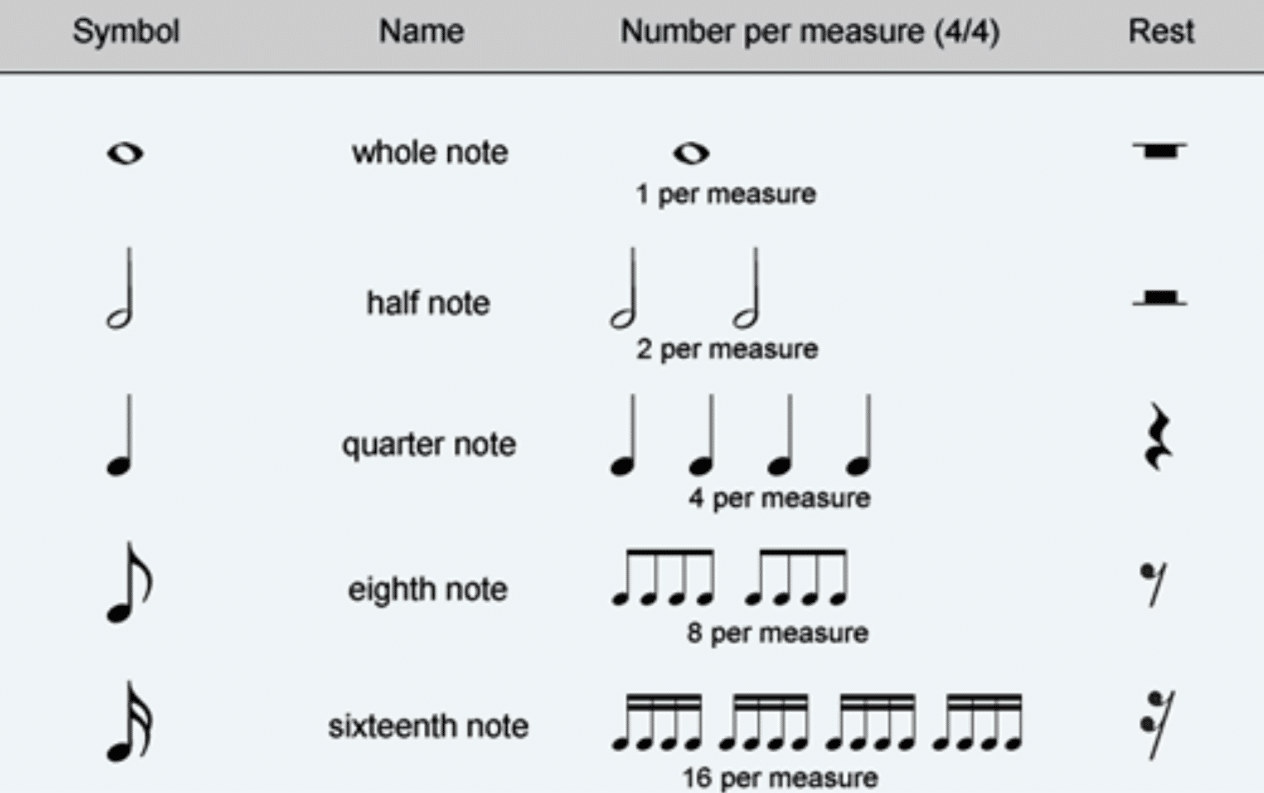
Now that we’ve covered some Music Theory basics, let’s delve deeper into the world of Rhythm.
Rhythm is the pattern of beats and the space between them, providing the structure and flow of music.
Rhythm can be simple or complex, and it often varies throughout a piece.
Some rhythms follow a regular and repeated pattern, while others are more irregular and syncopated.
For example, a basic 4/4 rhythm has a steady beat where each quarter note receives equal emphasis 一 while a syncopated rhythm might emphasize off-beats, creating a more intricate and dynamic feel.
A classic example of a simple rhythm is the 4/4 time signature used in many pop and rock songs.
In this case, the rhythm consists of a steady pulse, with each quarter note receiving equal emphasis.
On the other hand, jazz music often features complex rhythms, with syncopated beats and irregular patterns that create a sense of excitement and spontaneity.
Rhythmic Patterns

Rhythm patterns are created by combining different types of notes and rests, such as:
- Quarter notes (¼)
- Eighth notes (⅛)
- Sixteenth notes (1/16)
These patterns give the music its structure and help determine the overall feel of a piece.
The pulse, or the regular pulse underlying the rhythm, acts as the heartbeat of the music.
- A steady pulse 一 Provides a sense of stability.
- Amore irregular pulse 一 Can create a sense of tension or unpredictability.
For example, consider a rock song with a strong, driving rhythm pattern.
The pattern might consist of quarter notes on the bass drum and eighth notes on the snare drum, creating a sense of forward momentum.
The steady pulse underlying this rhythm pattern helps to maintain a sense of stability and consistency throughout the song.
Rhythm in Melody
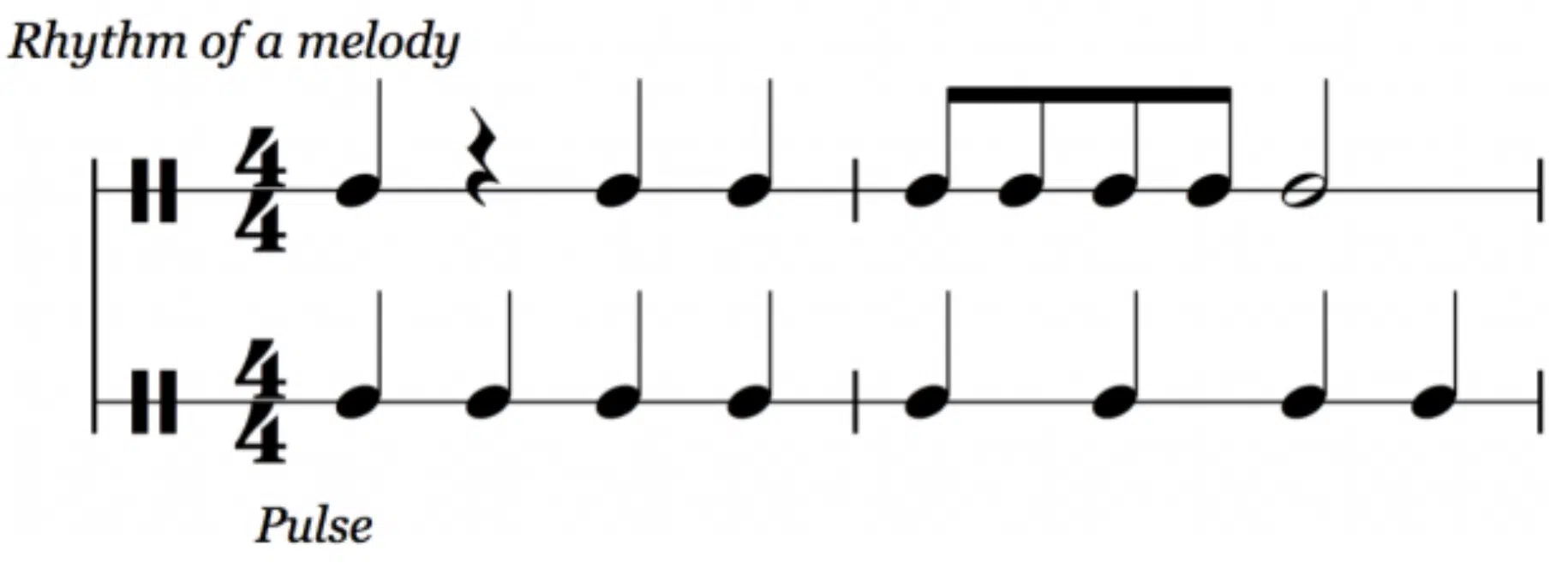
Rhythm plays a significant role in shaping the melody of a piece.
The way individual notes are arranged within a melody, including their duration and the space between them, can drastically affect the overall feel of the music.
By varying the rhythm played in a melody, a composer can create a wide range of emotions and moods.
For instance, imagine a simple melody consisting of only quarter notes.
The melody might feel quite static and monotonous due to the consistent rhythm.
However, by introducing a mix of eighth notes, sixteenth notes, and rests, the same melody can take on a completely different feel, with more movement and dynamism.
To discover 11 music note symbols you need to know, look no further.
What is Tempo?
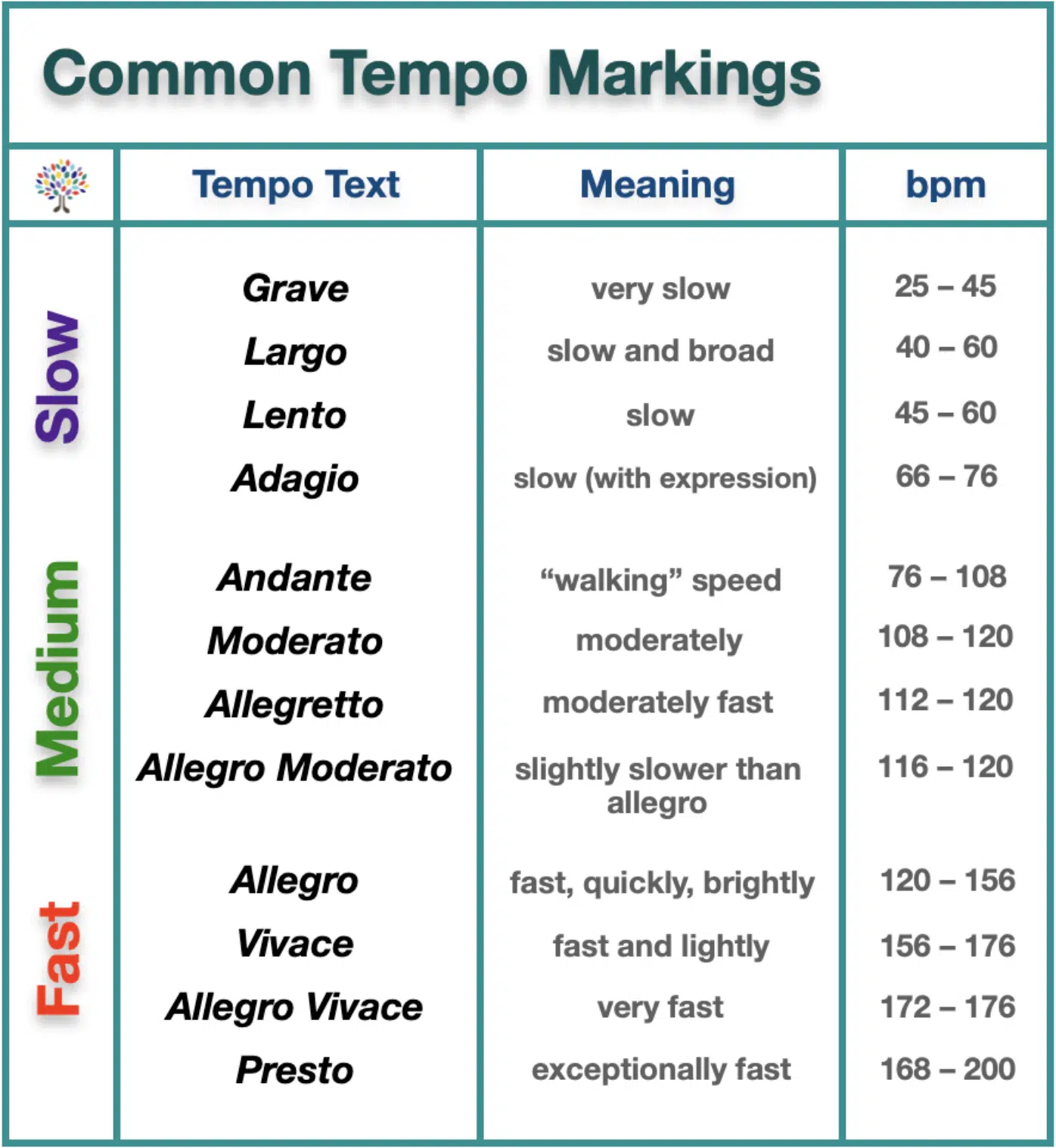
Now that we have a deeper understanding of the rhythm portion of rhythm vs tempo, let’s explore the concept of Tempo.
Tempo refers to the speed at which music is played, typically measured in beats per minute (BPM).
Tempo is a critical element in music, as it can dramatically influence the overall mood and energy of a piece.
- A slow tempo 一 Evokes feelings of relaxation or sadness.
- A fast tempo 一 Creates a sense of excitement or urgency.
For example, a slow-tempo ballad might have a BPM of around 60 一 while a high-energy dance track could have a BPM of 120 or higher.
By adjusting the tempo of a piece, a composer can completely alter the emotional impact of the music.
Tempo in Musical Pieces

Tempo can vary significantly throughout a musical piece, with some sections featuring a basic measurement and slower tempo, while others are played at a faster tempo.
These changes in tempo can be used to create contrast, build tension, or signal a shift in mood or energy.
Consider a symphonic piece that begins with a slow, somber introduction.
As the music progresses, the tempo gradually increases, building tension and anticipation.
Finally, the piece reaches a climax with a fast, dramatic section, creating a powerful emotional impact.
This series of events and tempo changes keep the listeners captivated and engaged.
Remember, being boring or stale is what makes people lose interest.
Slow Tempo vs Fast Tempo
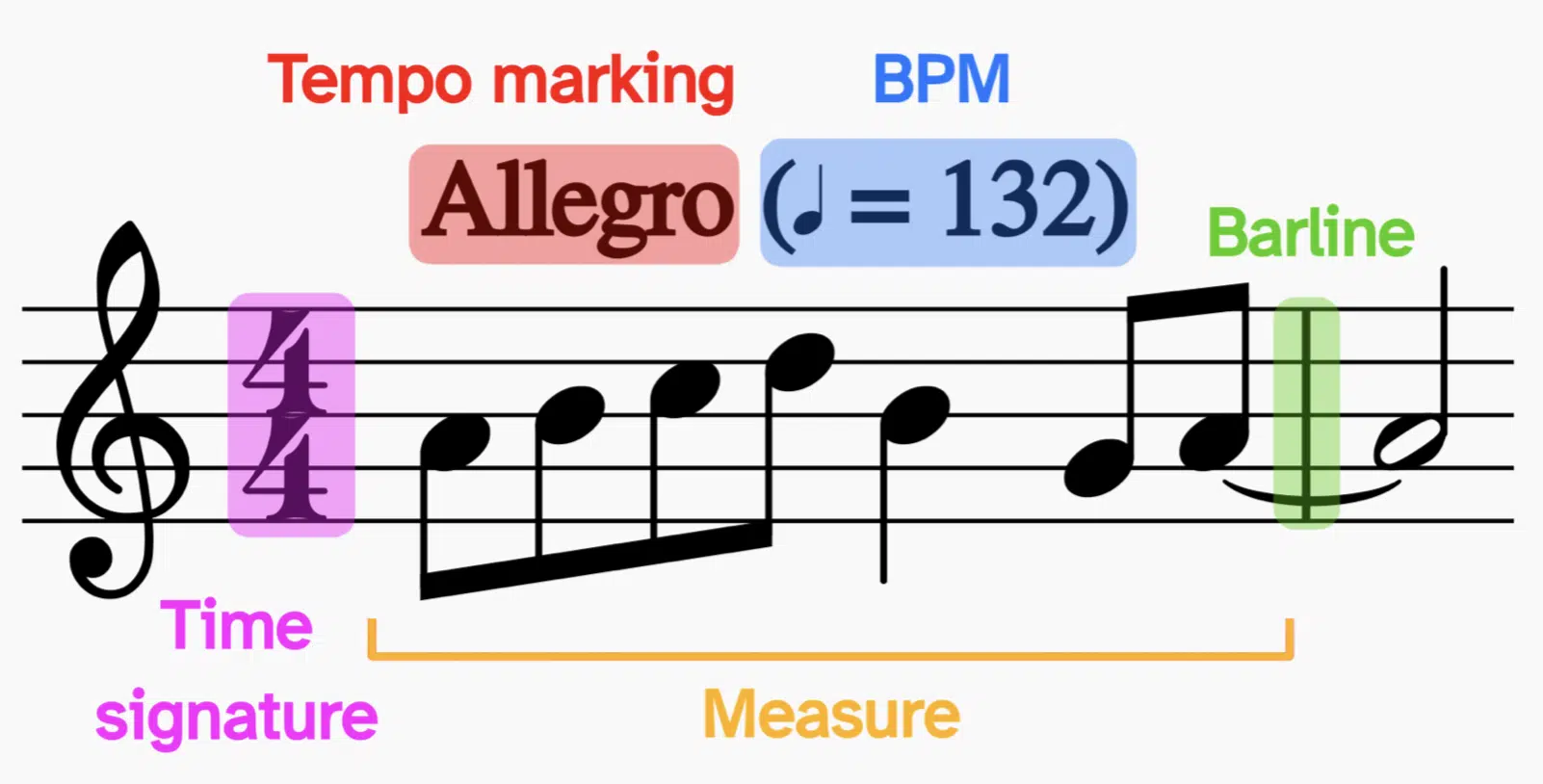
The difference between a slow tempo and a fast tempo can be quite significant, as it sets the entire vibe and feel of a piece.
- Slow tempos, often associated with ballads or more introspective music, can create a sense of calm, relaxation, or sadness.
- Fast tempos, on the other hand, are commonly found in upbeat, energetic genres like dance or rock music and can evoke feelings of excitement, joy, or urgency.
For example, a slow-tempo song like Adele’s “Someone Like You” creates a sense of melancholy and emotional vulnerability.
On the other hand, a fast-tempo track like Daft Punk’s “Get Lucky” generates a lively, danceable atmosphere that makes you want to move.
The tempo plays a significant role in shaping the overall mood and energy of these songs, showcasing the power of tempo in music production.
The Rhythm vs Tempo Debate
With a solid understanding of tempo and rhythm, let’s dive into the heart of the matter: the real differences between rhythm vs tempo.
Rhythm and Tempo are both essential elements of music, and they often work together to create the overall song structure and feel of a piece.
Rhythm provides the pattern and organization of beats, while Tempo determines the speed at which those beats occur.
Together, tempo and rhythm create the framework that supports the melody, harmony, and other musical elements.
For instance, imagine a song with a syncopated rhythm played at a faster tempo.

The combination of the intricate rhythm and the quick tempo creates a dynamic, exciting atmosphere that keeps listeners engaged.
Although Rhythm and Tempo are closely related, they are distinct concepts.
A song can have the same rhythm but be played at different tempos, resulting in a different overall feel.
Conversely, a piece can have different rhythms but maintain a consistent tempo.
Examples of Rhythm & Tempo
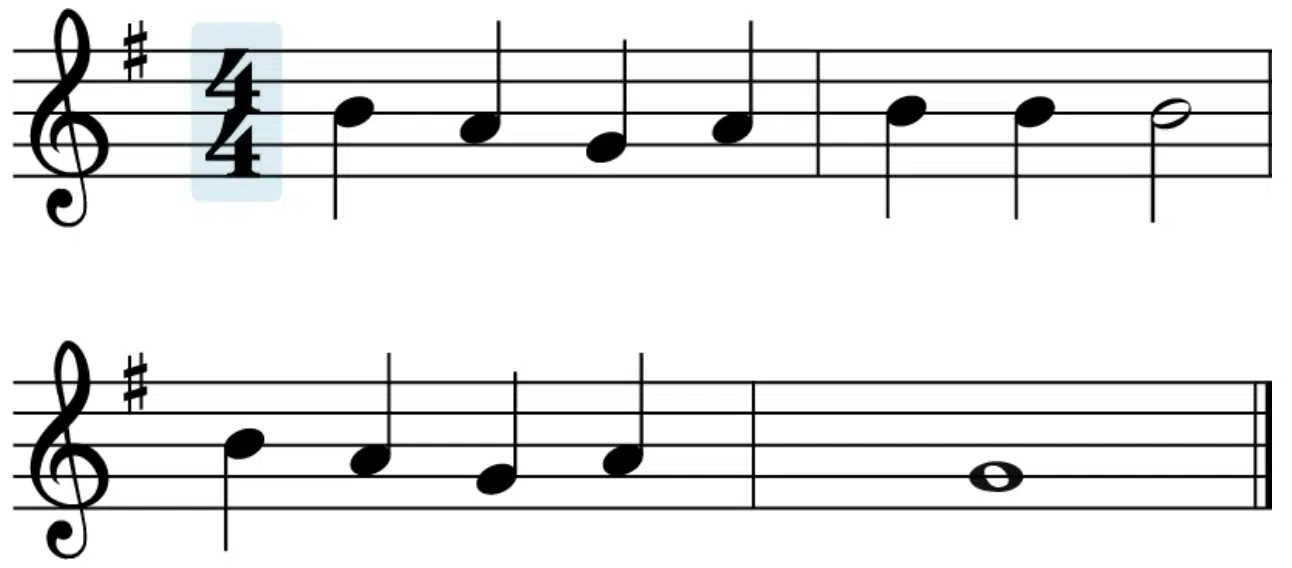
To further clarify the difference between Rhythm and Tempo, let’s look at a few more examples.
Imagine a piece of music with a simple 4/4 rhythm.
This rhythm can be played at a slow tempo, creating a calm and soothing atmosphere.
If the same rhythm is played at a fast tempo, it transforms into an energetic and lively piece, like some trance & psytrance chords.
Now consider a song with a complex, syncopated rhythm.
If this rhythm is played at a slow tempo, it might have a more laid-back, groovy feel, like some hip-hop chords.
However, when the same rhythm is played at a fast tempo, the result is a high-energy, frenetic piece that demands attention.
These examples demonstrate how Rhythm and Tempo can work together and independently to create a wide variety of musical moods and experiences.
Rhythm vs Tempo: How to Manipulate Them Accurately
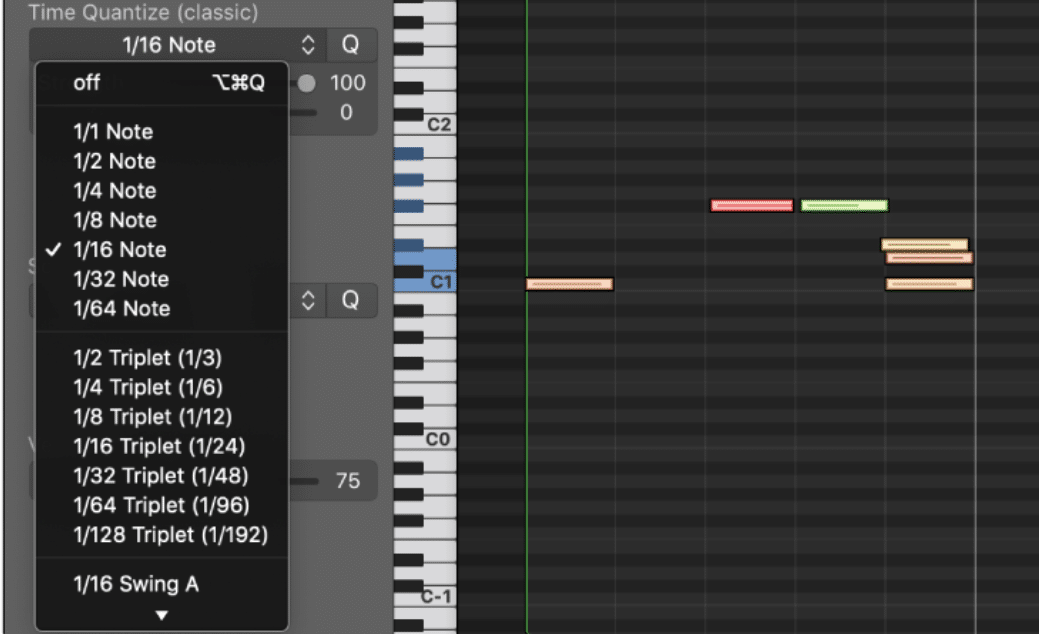
As music producers, understanding how to manipulate Rhythm and Tempo is crucial for creating engaging compositions.
Several techniques and tools can help you manipulate Rhythm and Tempo in your music production process.
A metronome is a basic but invaluable device for maintaining a steady tempo while recording or practicing.
In the digital realm, however, DAWs offer way more advanced options, such as:
- Built-in metronomes
- Tempo automation
- Quantization features
These parameters can help you create and edit complex rhythms with extreme precision.
When writing and producing music, it’s essential to experiment with different rhythms and tempos to find the perfect combination for your piece.
Try varying the rhythm patterns in your melody or percussion, and experiment with different time signatures to create unique and engaging compositions.
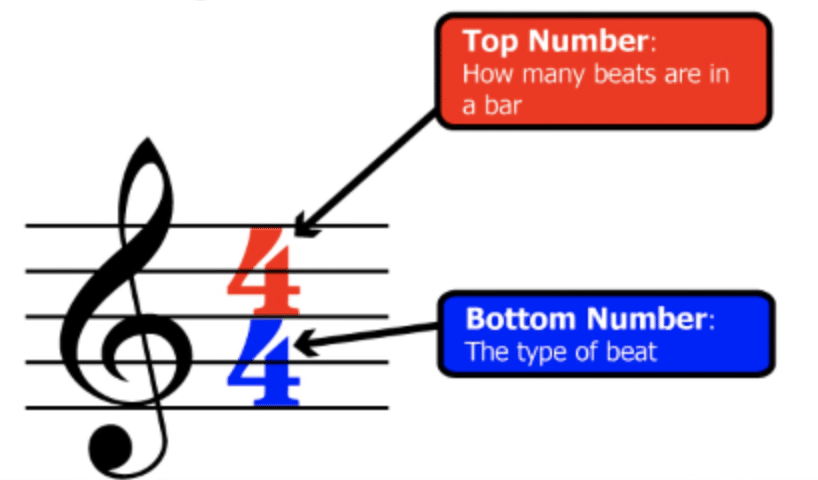
Additionally, don’t be afraid to change the tempo throughout your piece to add contrast and build tension or release.
This is something professional masterminds like Malaa, Marshmello, and Pop Smoke know all about.
Transitioning between different tempos can create a powerful emotional impact and keep your listeners engaged.
Tips for using Rhythm and Tempo Effectively
To use Rhythm and Tempo effectively in your music production, keep the following tips in mind:
- Be Intentional
Consider the mood or atmosphere you want to create in your piece and choose rhythms and tempos that support that vision.
Before starting a new project, take some time to think about the emotions you want to convey and the overall tone of the music.
This clarity will guide your choices in rhythm and tempo, ensuring that your composition effectively communicates your intended message.
If you want a little more help with music production, from top to bottom, check out the top music production courses around.
- Balance Simplicity & Complexity
While complex rhythms can be engaging and exciting, they can also be overwhelming if overused.
Strike a balance between simplicity and complexity to keep your music interesting without sacrificing accessibility.
Experiment with different levels of rhythmic complexity within a piece, alternating between simpler and more intricate patterns, especially drum patterns.
This approach will create variety and maintain the listener’s interest without making the music too difficult to follow or enjoy.
Ask yourself related questions such as “What would I like to hear” or “What would I think is way too much.”
- Experiment With Syncopation
Syncopated rhythms, where the emphasis is placed on off-beats, can add a unique and dynamic feel to your music.
Syncopation can create a sense of anticipation, surprise, or even tension, depending on the context.
Try incorporating syncopated elements into your percussion, melody, or even harmony to give your music a fresh, unexpected twist.
- Use Tempo Changes Strategically
Changes in tempo can serve as powerful tools for manifesting contrast, building tension, or signaling shifts in mood or energy.
For example, gradually increasing the tempo throughout a song can create a sense of excitement and anticipation.
Conversely, a sudden drop in tempo might signal a change in mood or the start of a new section.
Be mindful of how the changes affect the overall structure and flow of your music, and use them to enhance the narrative or emotional arc of your piece.
- Practice Makes Perfect
The more you work with Rhythm and Tempo, the more comfortable and adept you’ll become at using them effectively in your compositions.
Spend time studying different genres and styles of music, analyzing their use of rhythm and tempo, and experimenting with these elements in your own work.
As you gain experience, you’ll develop a more intuitive understanding of how to wield Rhythm and Tempo to achieve your desired effect.
By following these tips and honing your skills, you’ll be better equipped to use Rhythm and Tempo to their full potential.
This way, you can create music that is both captivating and emotionally resonant.
Rhythm vs Tempo: Final Thoughts
As we conclude our enthralling exploration of Rhythm vs Tempo, it’s hard not to be in awe of the intricate dance of beats, pulses, and patterns that underlie every piece of music.
The powerful interplay between these two elements breathes life into each composition, enabling music to evoke boundless creativity and emotion.
From the gentle sway of a slow ballad to the heart-pumping energy of an up-tempo anthem, Rhythm and Tempo have the power to transport your listeners on a rollercoaster ride of emotions.
To help you dive deeper into the world of melody creation and enhance your productions, don’t forget to check out the FREE Unison Essential Melody Loops.
These professionally crafted loops will inspire and elevate your tracks, allowing you to experiment with different rhythms and tempos, seamlessly blending them into your creations.
As you continue to craft your sonic masterpieces, always remember the pivotal role these elements play in shaping the heart and soul of your music.
Until next time…






